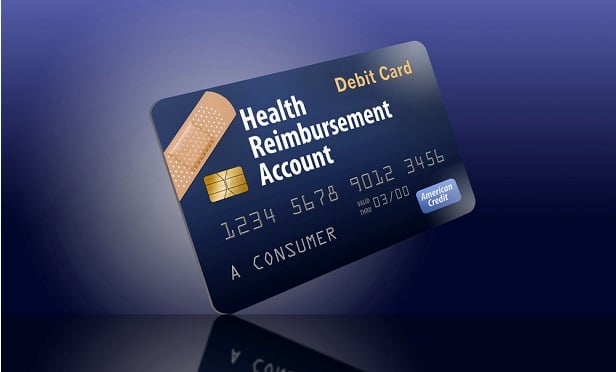 The recent additions of Small Employer, Individual and Excepted Benefit HRAs means more opportunity to maximize value and reduce health care costs through flexible spending on an "as needed" basis. (Photo: Shutterstock)
The recent additions of Small Employer, Individual and Excepted Benefit HRAs means more opportunity to maximize value and reduce health care costs through flexible spending on an "as needed" basis. (Photo: Shutterstock)
Health reimbursement arrangements (HRA) are among the most overlooked employee health benefit products available. But, they can be crucial for companies that are switching to a lower premium plan by providing tax-advantaged financial assistance to cover employees' eligible out-of-pocket health care expenses.
So, what is an HRA? The concept itself is pretty straightforward: they are tax-advantaged accounts funded with employer dollars to pay employee expenses not covered by their health plan. Employers outline what expenses will be covered in an HRA summary plan document as outlined by the Internal Revenue Service Publication 969. As an example, an HRA could pay all eligible medical expenses, including premiums for health and long-term care insurance, or it could be limited to cover only dental or vision expenses. Most organizations contribute annually or monthly.
Related: Personal, portable, paid for: ICHRAs could do for health care what 401(k)s did for retirement
There are a multiple of financial advantages to providing HRAs to employees:
- From a tax standpoint, employers can deduct the amount of their contributions once the amount is paid out to an employee.
- As a supplemental solution, HRAs give organizations the flexibility to purchase more value-priced health plans while ensuring employees get the financial coverage they need.
- Unused HRA funds are not portable, meaning they stay with the employer when an employee leaves.
- For employees, the HRA funds are also contributed on a pre-tax basis and not included as taxable income.
While HRAs have existed since the 1970s, more businesses and nonprofit organizations are seeing the benefit of the financial flexibility HRAs provide in the face of rising medical, dental and vision insurance costs. An HRA program also allows employers to cover or defer the costs of qualified medical expenses not covered in a health benefits plan.
There are four different types of HRAs, and while there are many specifics, here are the highlights to know:
1. Group HRA
- Must be paired with a medical plan in place
- Employer owns all the funds
- Employer defines the HRA and reimbursements
- Must include a TPA
2. Qualified Small Employer HRA
- For organizations with 50 or fewer employees
- Employees purchase individual health plans
- Employer sets monthly contribution
- Can cover individuals ($5,250 max) or families ($10,600 max)
- Part-time, seasonal, employees under 25 years old, in a collective bargaining agreement or within first 90 days of employment are ineligible
3. Individual HRA
- New for 2020
- Employee can select in lieu of a Group HRA
- Employee must be on their own individual health plan
- Employee cannot be on group plan or covered by a spouse
4. Excepted Benefit HRA
- New for 2020
- Designed for non-primary health plans such as dental, vision and COBRA premiums
- $1,800 maximum reimbursement annually (tied to inflation)
- Employees must be on the organization's group medical plan
There are a lot of moving parts with these various HRAs, but there is one that's appropriate for nearly any employment situation. The recent additions of Small Employer, Individual and Excepted Benefit HRAs means more opportunity to maximize value and reduce health care costs through flexible spending on an "as needed" basis.
The world of health benefits has been rapidly shifting in the past decade, as the cost of care increases– new solutions enter the market that can meet the needs of businesses and nonprofits to balance coverage with value. A health reimbursement arrangement can be a tool to drive that value.
 Jeff Strong is vice president of sales at Sterling Administration.
Jeff Strong is vice president of sales at Sterling Administration.
Read more:
- 3 important details in the new individual coverage HRA regs
- Experts warn HRA expansion could hurt workers, drive up premiums
- 9 Top FAQs about HSAs, FSAs, and HRAs
© 2025 ALM Global, LLC, All Rights Reserved. Request academic re-use from www.copyright.com. All other uses, submit a request to [email protected]. For more information visit Asset & Logo Licensing.







